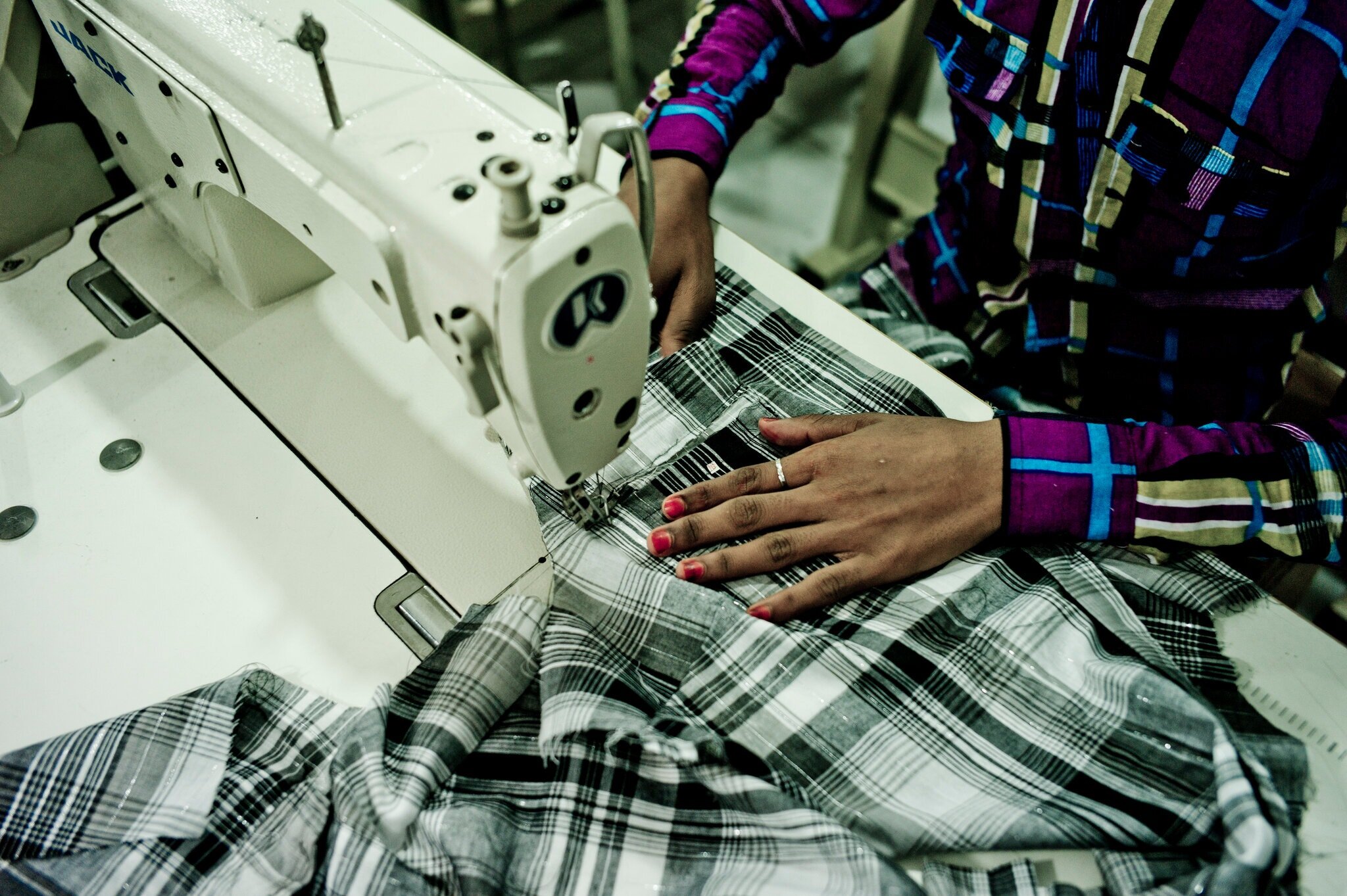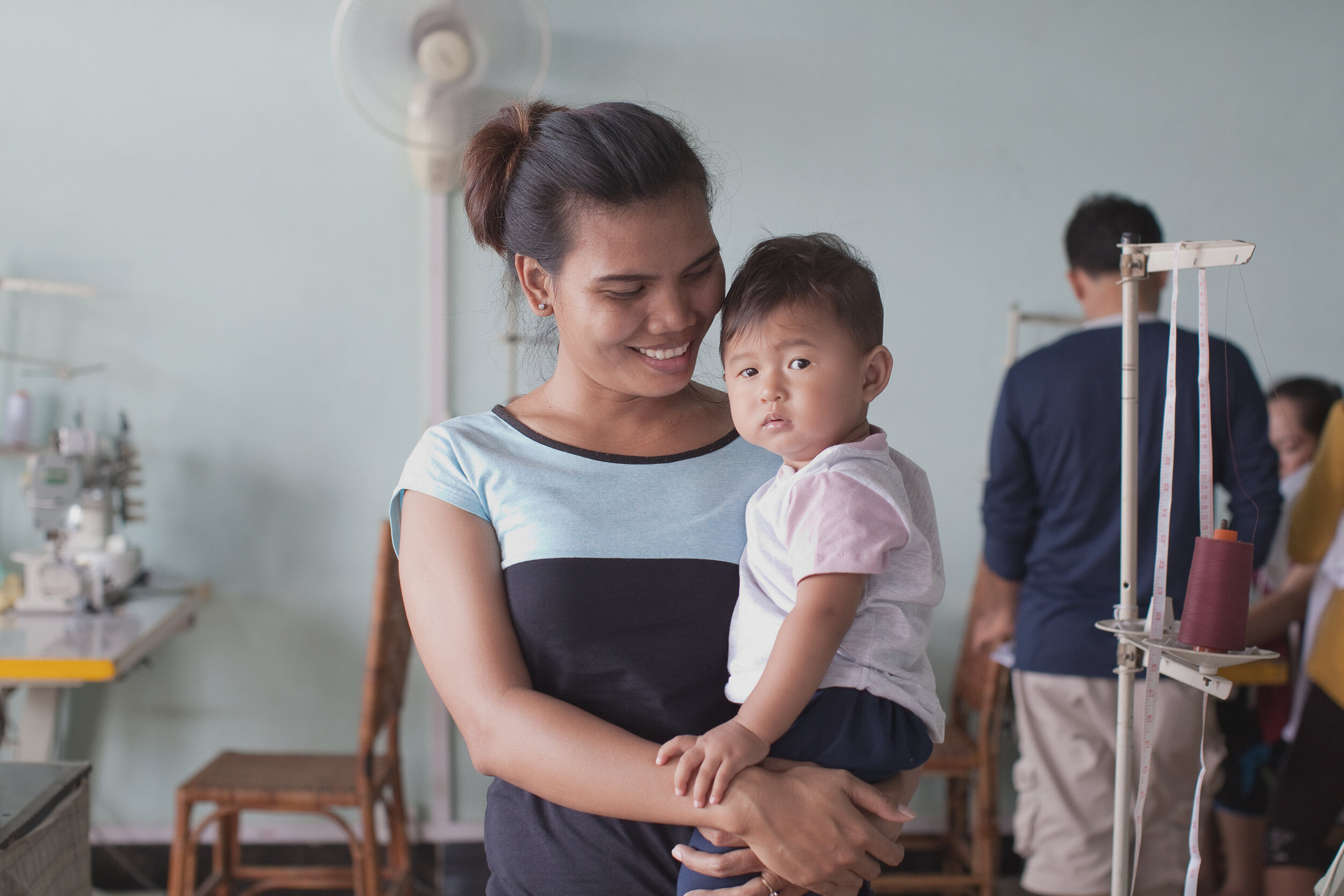The Power of Connection: How Tearfund’s Ethical Fashion Guide connects consumers, brands and producers
Garment workers from Mehera Shaw, India, who manufacture for Mane Project NZ. Image credits: Mehera Shaw
“Demand quality, not just in the products you buy, but in the life of the person who made it.” - Orsola de Castro.
We couldn’t agree more.
To celebrate the launch of Tearfund’s Ethical Fashion Guide 2021, we spoke with Advocacy Specialist, Morgan Theakston, about why connection matters and how their annual research is conducted.
Every year Tearfund NZ and Baptist World Aid Australia conduct in-depth research into the ethical business practices of around 100 companies that include over 400 brands from around the world. This research is then compiled into The Ethical Fashion Guide for consumers to download and refer to.
The goal of the Guide is simple: to connect - to connect us, as consumers, with brands that support fairer working conditions and are environmentally conscious, and to connect brands with their complex supply chains.
Why does connection between consumers, brands, and producers matter?
“Connection is the most powerful way to motivate people to change their behaviour,” says Morgan.
There are more than 40 million garment workers in the Asia-Pacific region alone, making the fashion industry a significant employer. However, this secretive industry is also a source of exploitation, trapping many in a poverty cycle of low wages and debt bondage. And until recently, most of us had no idea just how unfair the system is.
“Sadly, consumerism is rife with disconnection,” says Morgan. “In our past research we found that shoppers were disconnected from each other and brands were disconnected from their suppliers and makers.” And this disconnection sits at the heart of poverty, exploitation, and human suffering.
The Ethical Fashion Guide puts consumers in touch with brands that have implemented policies and strategies to address and reduce exploitation within their supply chain. According to Morgan, these policies include tracing raw materials, encouraging gender equality, and investing in workers through training programmes.
The guide details how consumers can make better shopping decisions and inspires us to reflect on the impact of our fashion purchases. “We have to understand that there are many businesses producing clothing in exploitative conditions and it’s about reminding people that no item is cute or trendy enough to be worth exploiting others for.”
Aside from aiding consumers, The Ethical Fashion Guide and Report also helps brands understand their impact on people and planet.
“We want to encourage brands to connect with their suppliers too. If a brand has only traced 50% of their final stage suppliers - and none of their fabric mills and raw materials, we make it a point to inform them of the risks that are involved within their supply chain and urge them to trace further.”
“Connection is the most powerful way to motivate people to change their behavior.” - Morgan Theakston, Tearfund NZ.
How are brands assessed in the Ethical Fashion Report?
The report mainly investigates companies that make more than $30 million(NZD) in revenue a year. Larger companies have a bigger impact and footprint, so Tearfund automatically evaluates and holds them accountable, whether or not they choose to participate in the research.
In recent years, however, Tearfund has also started inviting smaller companies to partake in their annual report.
“Companies are assessed through our survey which covers five different sections, each one weighted differently,” explains Morgan. The sections are:
Policies & Governance
Traceability, Risk & Transparency
Supplier Relationships & Human Rights Monitoring
Worker Empowerment
Environmental Sustainability
Tearfund automatically evaluates companies that earn more than $30million (NZD) in revenue per year. Image credits: Unsplash
Policies & Governance evaluate the standards that brands want their production to adhere to. This includes their code of conduct, provisions to prohibit forced or child labour, and health and safety conditions. “We check to see if brand executives are truly taking action towards environmental and social compliance. These issues are usually passed off to lower level executives, so the report advocates for it to be held at a higher level of accountability within the company.”
The Traceability, Risk & Transparency section explores how much of a brand’s supply chain is traced at all three tiers of production. Tier 1 covers Cut-Make-Trim (CMT) manufacturing, the final stage of production where garment workers sew our clothes. Tier 2 assesses input facilities like fabric mills, plastic production and leather tanneries. Tier 3 evaluates the traceability of raw materials like cotton farms, wool shearing and the use of crude oil for processing synthetic fibres.
“When the Rana Plaza disaster happened, we didn’t know which brands were sourcing from there so many of them weren’t held accountable,” says Morgan. “That’s why supply chain transparency is so important. If a similar disaster occurs, it would be much easier to trace and hold the brands responsible for their actions.”
In terms of Supplier Relationships & Human Rights Monitoring, brands are asked to provide evidence for whether their production facilities are audited and monitored for safer working conditions. Brands are also assessed on how well they actively collaborate with their suppliers and build long-term relationships.
Next, Worker Empowerment considers whether workers are paid a living wage and if they are allowed to participate in worker unions. Morgan explained that since many brands source largely from China, where worker unions are illegal, the risk for labour rights abuse is potentially higher. It’s the section in which companies tend to score the lowest on every year.
Since launching the report, there have been signifcant improvements from major clothing companies. Image credits: ReCreate Clothing
“A living wage is the single most important thing for changing the life of a garment worker and reducing their risk of exploitation because it addresses the root of the issue, which is poverty,” says Morgan.
“It can be tricky because many brands share a small % of the orders that a supplier produces. They don’t always have significant leverage towards worker wages so even if a company pays their factory more, the wages might not make it directly to the garment worker.”
While Tearfund acknowledges that this is a complex issue, they are clear that it's no excuse for the current exploitative system. “What really needs to happen is industry collaboration and more transparency from companies about their supply chain. Companies must work together to collectively raise wages and that rests on better partnerships and commitments.”
Finally, Environmental Sustainability evaluates brands on aspects like water usage and the use of sustainable materials.“Recently, we’ve increased the weightage of this category because to be ethical is to also be sustainable. The communities contributing to climate change and water pollution the least are the ones who feel its effects the most, so it’s imperative that brands take action to reduce their environmental impact,” explains Morgan.
This year, brands will also be assessed on overproduction, which is a big problem in New Zealand. Usedfully recently revealed that in New Zealand, 220,800 tonnes of textiles are sent to landfills every year. That’s 44kg of textiles per person, per year compared to Europe which generates 27.9kg per person each year.
What is the impact of the Ethical Fashion Report? Have things improved?
The good news is, since launching the Ethical Fashion Report in 2013, there have been significant improvements from major companies that were surveyed.
“We’ve seen really impressive changes over time. In 2013, only 17% of companies that we surveyed began tracing their raw materials. In 2019, that number jumped to 48%. We’re expecting to see an increase this year as well,” says Morgan.
Similarly, supply chain transparency was only evident in 18% of the companies surveyed in 2013. In 2019, that amount increased to 37%.
Part of that is due to demands from conscious consumers and activists. But brands are also starting to realise their impact and are willing to take action to improve. “We’ve had brands tell us that they’ve used our survey to inform their compliance programme and come back to us with real changes.”
We hope to see more brands scoring high in this year’s report too!
The Covid-19 Fashion Guide shared the story of Rani, a 27-year-old garment worker from Bangladesh. who was forced to work overtime with no extra pay during the pandemic. Image credits: Tearfund NZ
A collaborative effort towards a fairer industry.
While some may view Tearfund’s Ethical Fashion Report as an ethical report card (brands are graded from A+ to F), it’s more of a collaborative process between companies and researchers.
“We go back and forth with the survey and have meetings with most of the companies we assess. If a brand doesn’t meet the survey requirements, we’ll often advise them on what actions they can take to improve their compliance systems and meet the requirements in the future,” says Morgan.
Of course, that doesn’t mean brands are let off easy. Even brands that score As and Bs are held to a high standard, ensuring that they can provide fairer working conditions for their workers. “Ultimately, it’s about what’s best for the garment workers, so we’re not afraid to push back and ask the tough questions.”
This year is the first time Tearfund is releasing the raw score grade brackets. These show the criteria for each grade and why companies have scored their respective grades.
The team also has an extensive cross-check process in place, to ensure the consistency and validity of a brand’s claim. Organisations like Fairtrade, Better Cotton Initiative (BCI) and Global Organic Textile Standard (GOTS) are surveyed so their standards can be implemented into the Ethical Fashion Report survey too.
“We’re also advocating for a Modern Slavery Act in New Zealand. We want to make ethical fashion more accessible for the average Kiwi so a mom can walk into the store and buy something without worrying that it was made through exploitation.”
How can we as consumers connect better to the people who make our clothes?
“To me, connection means pausing and thinking about the people behind our clothes,” says Morgan. “Think about the circumstances that they live in due to our overconsumption habits. A good way for us to connect is to read their stories, watch documentaries about these issues, and become as educated as possible on the impacts of our purchasing decisions”.
Last year, the Covid-19 Fashion Guide shared the story of Rani, a 27-year-old garment worker from Bangladesh. Since the pandemic started, Rani has been required to work extra hours to clean the factory floor at the end of each day. But despite working 14-hour shifts, she was no longer paid extra for overtime. And although the workers tried to maintain social distancing and good hygiene, Rani said the risk of Covid-19 was still high. Read more of her story on the Covid Fashion Report.
Stay tuned for The Ethical Fashion Guide 2021, set to launch in October 2021 and see how ethical your favourite brands scored.
For more resources on ethical living, visit our Resources page!
Tearfund is an international aid and development organisation passionate about seeing individuals and communities transformed by hope, opportunity and dignity. In their work of seeking justice and an end to poverty and exploitation, Tearfund NZ partners with Baptist World Aid Australia to conduct in-depth research for The Ethical Fashion Report. They have compiled The Ethical Fashion Guide & Covid Fashion Guide especially for Kiwis.





